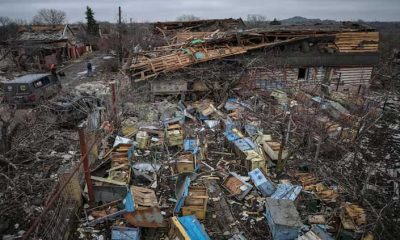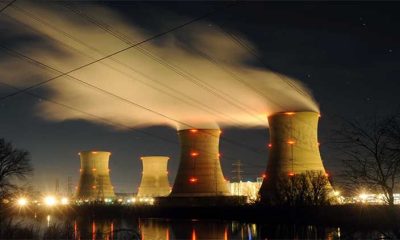When floods ripped through parts of Europe in September, the scale of the destruction took people by surprise. The intense rains should not have, because those had been predicted by sophisticated forecasting systems enhanced with artificial intelligence.
But forewarned did not mean forearmed. Though the rains were accurately predicted, the effects in the deluged areas were not – a fact that highlights the difficulties of dealing with ever more common extreme weather.
AI has supercharged weather forecasting, using a range of statistical tools to analyse years of historical data and predict patterns, and at a lower cost than traditional numerical weather predictions.
AI technology can create more specific predictions ahead of events such as urban flooding or in complex terrain such as mountainous areas.
For example, Google-funded GraphCast, a machine learning–based method trained directly from reanalysis data, was found to outperform traditional models. Reanalysis data relies on past forecasts rerun with modern forecasting models to provide the most complete picture of past weather and climate.
But there are still gaps in knowledge, in how the information in used and in investment to strengthen data gathering models, experts say.
“In some cases and for some variables, AI models can beat physics-based models, but in other cases vice versa,” said Andrew Charlton-Perez, professor of meteorology at the University of Reading in the UK.
One issue is that the effectiveness of an AI model is only as good as the information it is fed. If there is little input data, or extreme events happen more frequently at different times of the year or in different regions, weather disasters become more challenging to predict.
“A good use of the AI-based weather forecasts would be to complement and enhance our forecasting toolbox, perhaps by allowing us to produce larger ensembles of forecasts that enable accurate assessment and interpretation of the likelihood of extreme events,” Charlton-Perez added.
COMMUNICATION IS KEY
Since January, the European Centre for Medium-Range Weather Forecasts (ECMWF), an independent organisation that provides predictions four times per day to European countries, has been using the Artificial Intelligence/Integrated Forecasting System (AIFS).
This data-driven forecasting model makes multiple predictions rapidly and delivers long-term forecasts of weather events like cyclones and heatwaves. The ECMWF readings ahead of the September floods were accurate, experts say.
Thomas Wostal, press officer for meteorological observatory GeoSphere Austria, told Context/the Thomson Reuters Foundation that their numerical models – including the ECMWF’s predictions – foresaw 300-400 millimeters (11.8-15.7 inches) of rain locally, which came to pass.
But even with accurate forecasts, scientists say communication is key, especially in an era when climate change means extreme weather is becoming more frequent.
“I think what happened with (the recent floods) … is that it’s so rare – a one in 150- to 200-year event – that even if the weather models capture it, there’s a reasonable degree of uncertainty,” said Shruti Nath, a postdoctoral research assistant in predicting weather and climate at Oxford University.
“You have to produce the warning in a way that is communicative, in the degree of severity it could possibly have on people, then people could see the cost of inaction versus the cost of action is actually much greater. So then they would actually put (in) more resources,” she said.
EUROPE BEHIND THE CURVE?
Europe faces urgent climate risks that are outpacing policies and adaptation actions, a report from the European Environment Agency has warned.
Extreme heat, drought, wildfires and flooding will worsen in Europe even under optimistic global warming scenarios and affect living conditions throughout the continent, the EEA says. After the floods, the European commissioner for crisis management, Janez Lenarčič, said the disaster was not an anomaly.
“These extreme weather events that used to be once in a lifetime are now an almost annual occurrence. The global reality of climate breakdown has moved into the everyday lives of Europeans,” he said. Some tech entrepreneurs say Europe is not ready.
Jonas Torland, co-founder of Norway-based 7Analytics, which develops models for predicting floods and landslides, said governments and businesses in the United States had risk managers who were more accustomed to assessing environmental hazards, while in Europe, authorities lacked readiness.
“We often see substantial expenditures with minimal data support for informed decision-making”, Torland, whose models are used in the cities of Oslo, Bergen and Kristiansand, told the Thomson Reuters Foundation.
“While AI is a crucial component of these models, unfortunately, governments are not investing in or purchasing these advanced AI solutions,” he said adding that he believed governments “stick to their old data providers and consultants.”
Data processing is also a challenge because these complex AI models need to run updates every hour as forecasts change.
That requires both a lot of computing power, and a lot of time – especially at more minute scales. A 1-by-1 metre grid, which 7Analytics uses for its predictions, is 100 times more detailed than a 10-by-10 metre grid, but requires more than 100 times as long to process.
High computing power also means huge amounts of energy and water are needed, which makes AI models part of the problem because they are adding to the planet-heating emissions driving the climate emergency.
Some big technology companies, like Microsoft and Google, are exploring the use of nuclear power to run their huge data storage centres.
Other scientists stress that beyond refining their forecasting abilities, authorities need to invest in physical solutions, like developing areas where floodwater can safely be stored, and early warning systems.
They also need to minimise development in flood-prone areas, given the likelihood of more intense climate change-driven floods, and meet their commitments to limit emissions.
“It’s not a question of data or technology or knowledge. It’s a question of implementation, political will,” Friederike Otto, a senior lecturer at Imperial College in London, said in an email response to questions.
“As long as the world burns fossil fuels, the root cause of climate change, extreme weather events will continue to intensify, killing people and destroying homes. To curb this trend, we need to replace oil, gas and coal with renewable energy.”
Post Views: 6

 pakistan3 months ago
pakistan3 months ago
 Business3 months ago
Business3 months ago
 Tech3 months ago
Tech3 months ago
 Tech3 months ago
Tech3 months ago
 Business3 months ago
Business3 months ago
 World3 months ago
World3 months ago
 Entertainment3 months ago
Entertainment3 months ago
 Sports3 months ago
Sports3 months ago




















